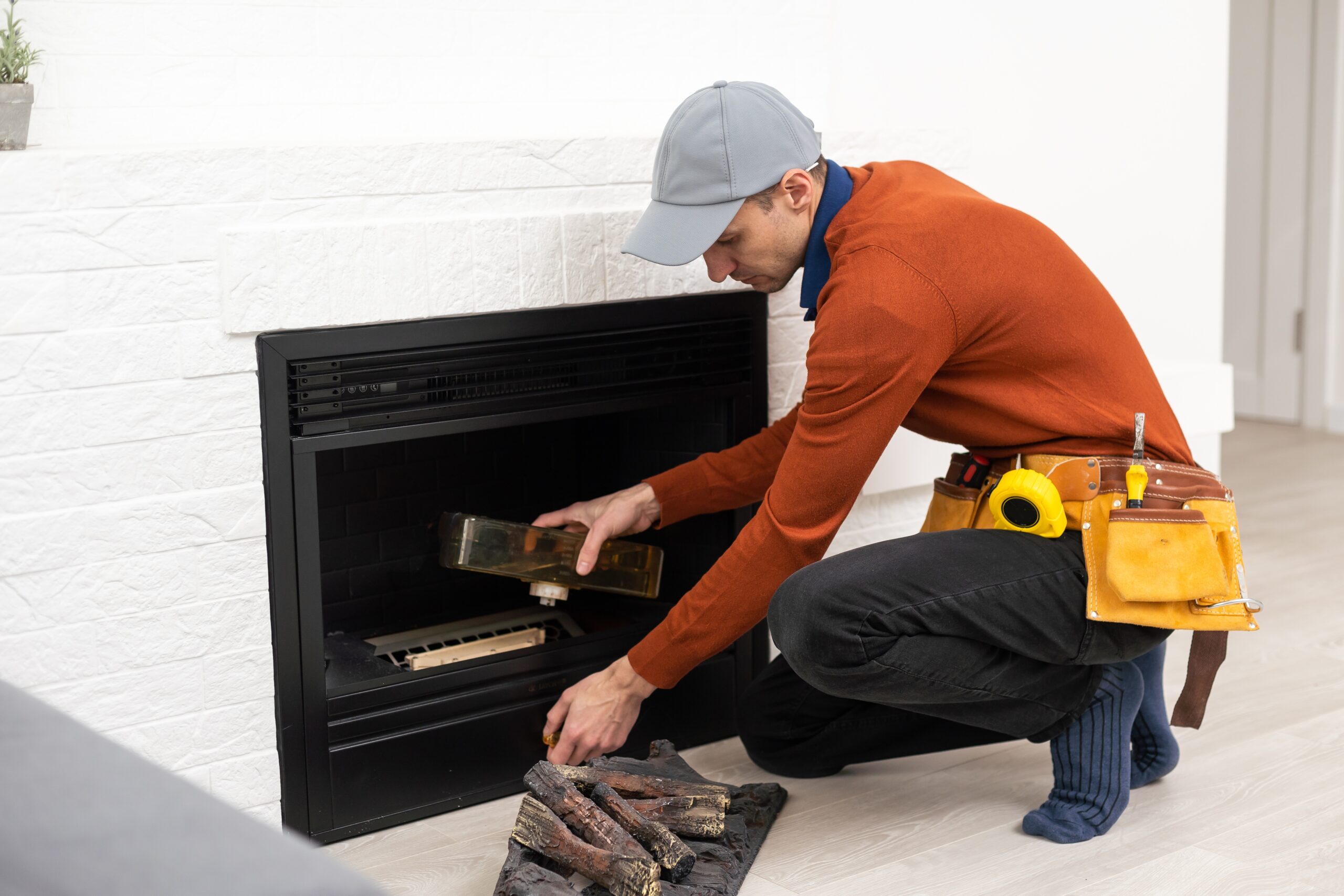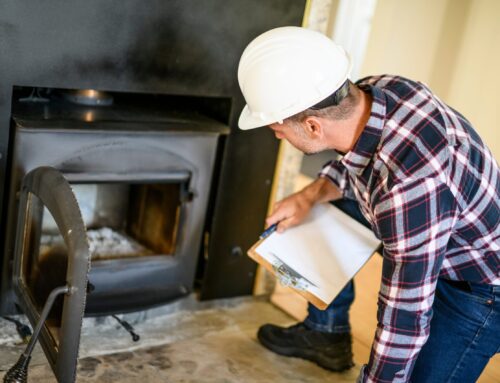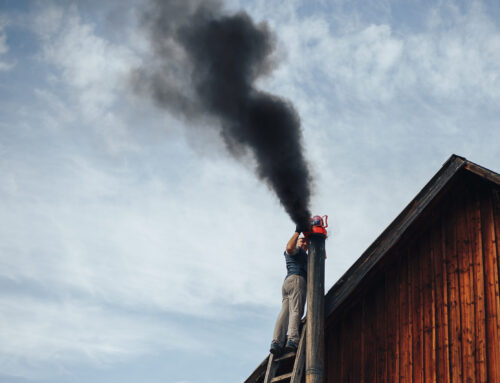Your fireplace provides warmth and comfort during cold months, but it also requires regular maintenance to stay safe and efficient. Chimney cleaning is not just about removing soot, it prevents house fires, carbon monoxide leaks and costly structural damage.
Many homeowners delay maintenance until obvious problems arise, but this approach can be dangerous and expensive. According to the Chimney Safety Institute of America, dirty chimneys cause thousands of house fires every year, most of which could have been prevented with proper cleaning.
The good news is that your chimney gives clear warning signs when it needs attention. By learning to recognize these indicators, you can schedule professional cleaning before minor issues become major problems.
Key signs your chimney needs cleaning
Smoke backing up into the room
One of the most obvious and concerning signs is smoke entering your living space instead of going up the chimney. This happens when your flue is blocked by creosote buildup, debris, or animal nests. Poor ventilation is a serious safety hazard because toxic gases like carbon monoxide could also be entering your home.
If you notice smoke backing up, stop using your fireplace immediately and contact a professional. This is not a problem you can ignore or fix with a quick DIY solution.
Black residue and creosote buildup
Creosote is a highly flammable tar-like substance that forms when wood burns incompletely. You might notice:
- black sticky residue on the damper or firebox walls
- tar-like dripping inside the fireplace
- a glossy, hardened coating on chimney walls
Stage 3 creosote is extremely dangerous and can ignite at relatively low temperatures, causing chimney fires that may spread to your home’s structure. If you see significant buildup, it’s time for immediate professional chimney cleaning.
Unusual odors from the fireplace
Your fireplace should not produce strong odors when not in use. Concerning smells include:
- musty, damp odors: moisture or mold problems
- strong smoky smell: creosote buildup or poor ventilation
- rotting smells: animal nests or debris
These odors often become more noticeable during humid weather when moisture activates creosote and debris. Do not mask these smells, address the underlying issue with professional cleaning.
Poor draft or difficulty lighting fires
If your fires are hard to start, burn poorly, or seem to “struggle” for air, your chimney likely has airflow problems. Signs include:
- fires that will not stay lit
- excessive smoke during burning
- cold air coming down the chimney
- difficulty getting the fire to draw properly
Poor draft indicates blockages or structural issues that reduce airflow. This makes your fireplace inefficient and increases the risk of smoke and carbon monoxide entering your home.
Visible soot and debris around the fireplace
Check for these indicators:
- black staining on the fireplace opening or walls
- soot deposits on glass doors
- fine black powder around the hearth
- debris falling into the firebox
Some soot is normal, but excessive buildup means your chimney is not venting properly and needs professional cleaning.
Animal nests or blockages
Chimneys are attractive nesting spots for birds and squirrels. Signs include:
- scratching or chirping sounds
- visible nests or debris
- strong animal odors
- reduced airflow
Never attempt to remove animals yourself – contact professionals who can handle it safely.
How often should you schedule chimney cleaning?
The frequency of cleaning depends on usage:
- heavy use (50+ fires per year): annual cleaning and inspection
- moderate use (20–50 fires): annual cleaning recommended
- light use (fewer than 20 fires): every 2 years, but annual inspection still needed
- occasional use: inspection every 2–3 years
Wood type also matters:
- softwoods (pine, fir, cedar): produce more creosote
- hardwoods (oak, maple, hickory): burn cleaner but still need maintenance
- seasoned wood: produces less creosote than green wood
Looking for chimney cleaning near me? Regular inspections are the best way to prevent risks and choose the right cleaning schedule.
Quick checklist for homeowners
✓ Does smoke go up the chimney or back into the room?
✓ Any visible soot, creosote, or debris buildup?
✓ Any unusual smells from the fireplace?
✓ Does the fire start easily and burn well?
✓ Any unusual noises (animals, whistling, echoing)?
✓ Any visible damage to the chimney outside?
If you notice one or more of these warning signs, book a professional chimney cleaning near you before winter starts.
Why professional chimney cleaning matters
Specialized equipment and expertise
Professional sweeps use:
- video cameras for inspections
- HEPA vacuums for safe dust control
- rotary tools for creosote removal
- professional brushes for each chimney type
Comprehensive problem detection
A certified chimney sweep near me can identify:
- structural damage or deterioration
- installation issues
- moisture problems
- wildlife infestations
- code violations
Safety and insurance
Professional services provide:
- liability insurance
- proper safety equipment
- compliance with local codes
- detailed inspection reports
Don’t wait, schedule your cleaning today
Do not wait until smoke fills your living room. Book your chimney cleaning before winter and enjoy a safe, warm fireplace all season long.
Professional cleaning typically takes 2–3 hours and includes:
- complete inspection
- thorough flue and firebox cleaning
- debris removal
- safety assessment and recommendations
- written report
Schedule your cleaning today and keep your family safe throughout the heating season.
Conclusion: better safe than sorry
Regular chimney maintenance is always more affordable than emergency repairs or fire damage. The warning signs we discussed are your chimney’s way of asking for help before problems become dangerous.
The best chimney cleaning is regular, certified, and professional. Do not gamble with your family’s safety by ignoring warning signs or trying risky DIY methods.
When searching for chimney cleaning near me, choose certified professionals with strong reputations and proper insurance. Your fireplace should be a source of comfort, not risk. Take action today – your family’s safety depends on it.






